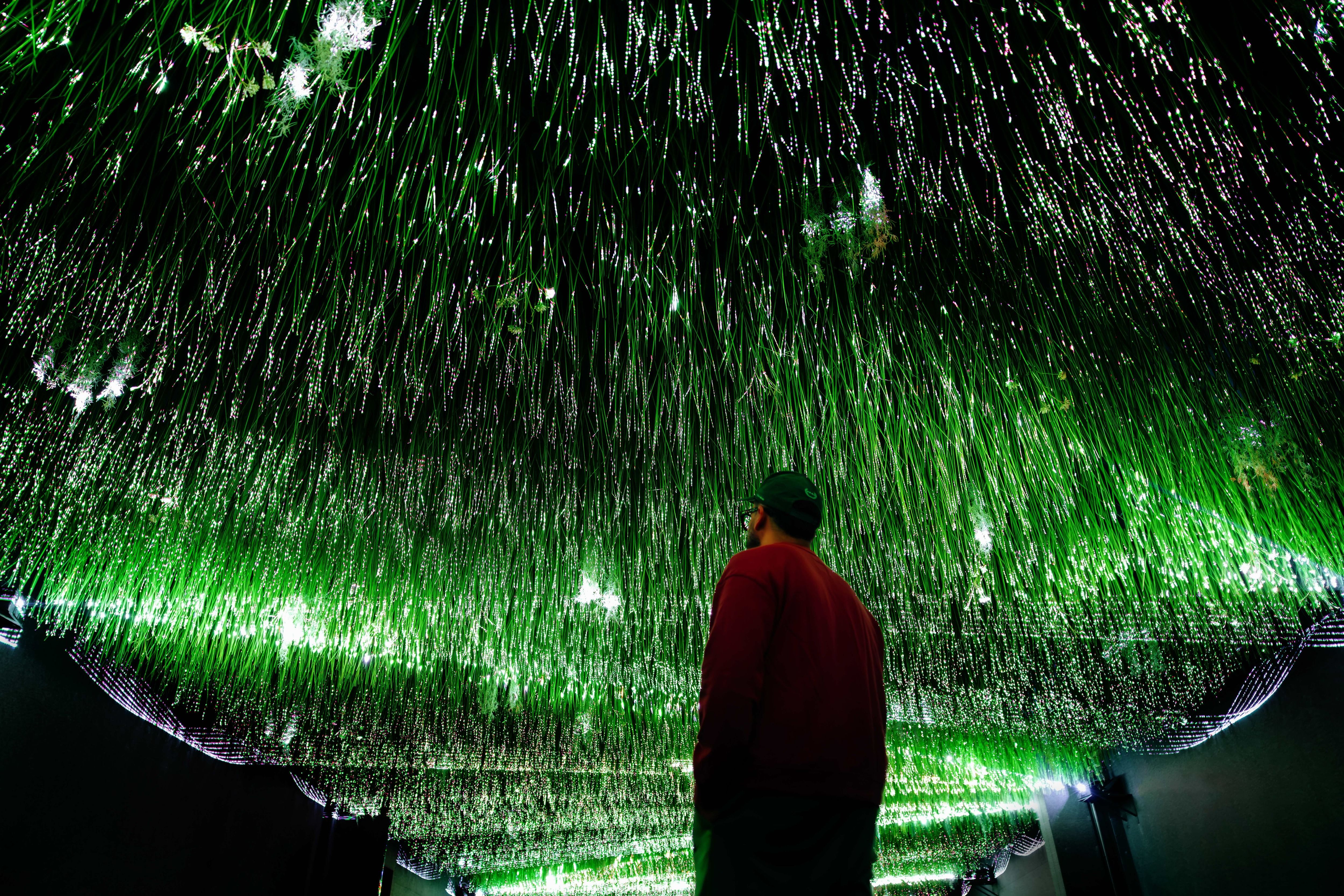How Does Art Reflect a Nation in Turmoil?
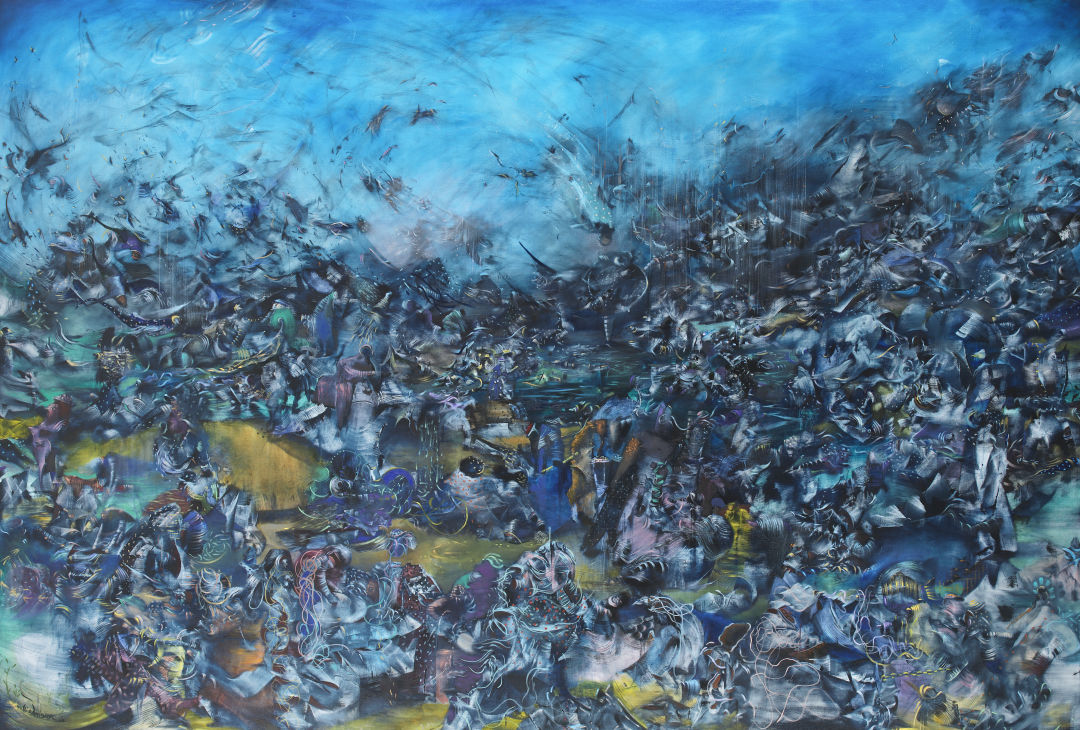
Ali Banisadr, We Haven’t Landed on Earth Yet, 2012, oil on linen.
You will, at first, feel a profound calm entering Rebel, Jester, Mystic, Poet: Contemporary Persians, a beautifully curated exhibit of 27 paintings, sculptures, photographs and videos by 23 Iranian-born artists, many of whom currently live and work in Tehran. Just outside the exhibit’s entrance, Farhad Moshiri’s stack of 32 Persian carpets, each identically cut into the shape of a fighter aircraft, looks like something you might trip over on your way into a temple or mosque. But Moshiri’s meticulous craftsmanship in service of an underlying message is a quality shared by all of the show's artists. Truthfully, the mystic is as present as the rebel in each work on display—all of which are quite beautiful to look at, despite the challenging, sometimes disturbing subject matter being addressed.
All of the art in Rebel comes from the collection of philanthropist Mohammed Afkhami, who grew up in Tehran but fled to London with his family in 1979 after the Iranian revolution. A passion for art runs through Afkhami’s family; his paternal great-grandmother founded a painting school for girls, and his maternal grandfather collected examples of Persian calligraphy, some of which showed at the Reza Abbasi Museum in Tehran in 1978. Afkhami returned to visit Iran in the early 2000s and has since made it his mission to collect and share the work of contemporary Iranian artists with the world. The show’s curator and conceptualist is Fereshteh Daftari for Toronto’s Aga Khan Museum, and at the time of this writing, the Museum of Fine Arts, Houston is the exhibit’s only U.S. stop.
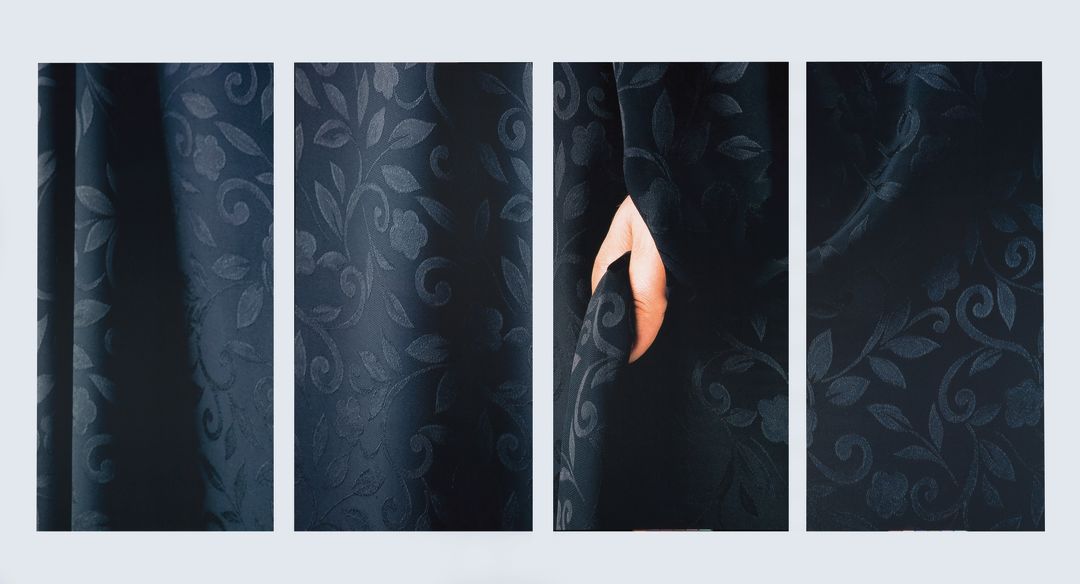
Parastou Forouhar, Friday, 2003, four panels: Chromogenic prints mounted on aluminum.
It’s clear the artists are simultaneously fascinated by and deeply wary of the power of images and language, and many pieces in the exhibit upend the unholy alliance between art and propaganda. Khosrow Hassanzadeh’s Terrorist: Khosrow portrays the artist sitting peacefully with his legs crossed, cradling a bowl of pink flowers, framed within a garish, silkscreened landscape of clouds and waterfalls. Mahmoud Bakhshi’s triptych of neon tulip sculptures, each formed out of a calligraphic rendering of the word “Allah,” pays tribute to those who were martyred during the 1979 Iranian revolution, and yet the piece’s title, Tulips Rise from the Blood of the Nation’s Youth, is leaden with irony.
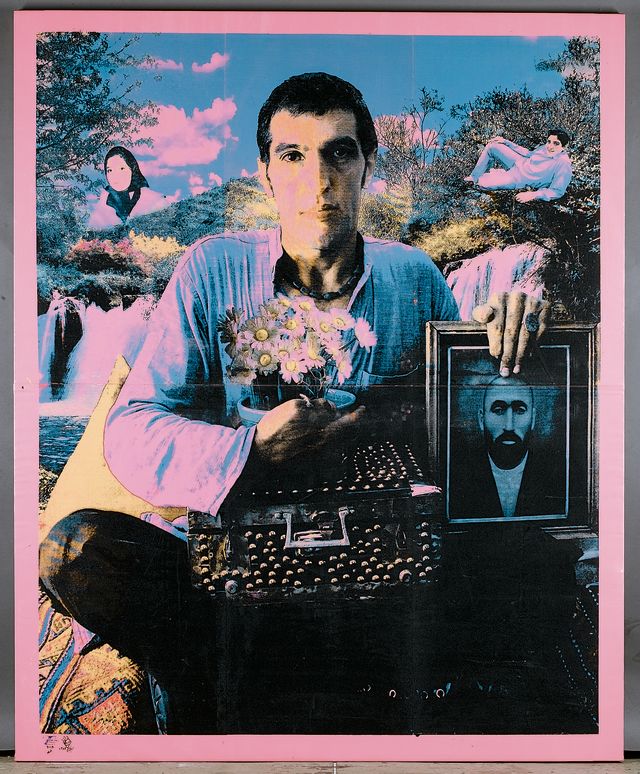
Khosrow Hassanzadeh, Terrorist: Khosrow, 2004, acrylic and silkscreen ink on canvas. © Khosrow Hassanzadeh.
The interplay between all of the art is provocative and grows more engaging the longer one spends in the exhibit. Ali Banisadr’s large-scale painting We Haven’t Landed on Earth Yet is an abstracted explosion captured at the moment of detonation and realized in deep shades of blue, violet, gold and black. (As a child, Banisadr experienced the 1980s bombings of Tehran by Iraq.) Despite its non-hierarchal composition and its depiction of action rather than aftermath, the painting feels strangely sublime, as if it might provide a doorway to transcendence. Meanwhile, hung on the opposite wall, Shirazeh Houshiary’s Memory features a horizontal Rothko-esque stripe of blue at the center of a white canvas, its hallucinatory quality the result of repeatedly writing, over and on top of the other, just two words in Arabic. Houshiary does not reveal the specific words she wrote, thus maintaining the mystical nature of the creative act.
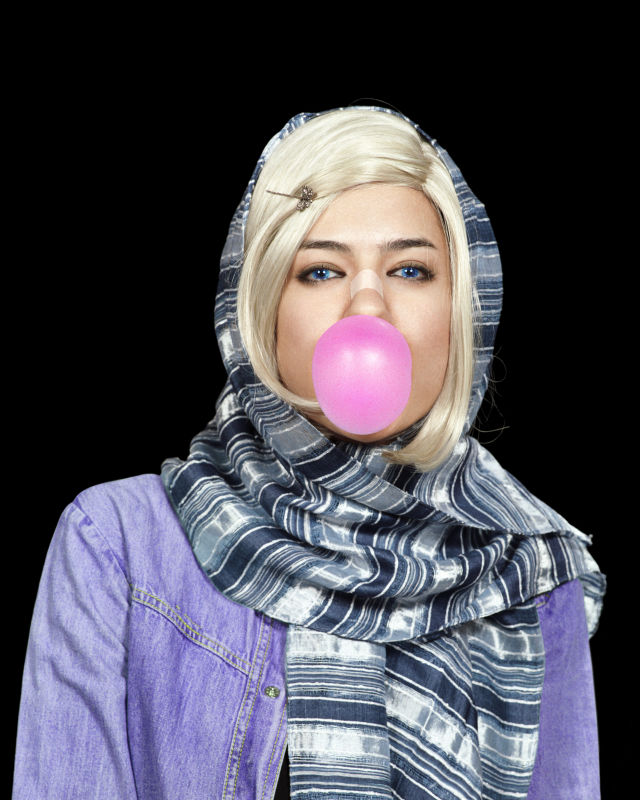
Shirin Aliabadi, Miss Hybrid 3, 2008, chromogenic print.
So who are the jesters among these artists? Along with Hassanzadeh, there is photographer Shirin Aliabadi, whose Miss Hybrid 3 is a stunning, elaborately staged portrait of a young Iranian woman, looking very much like what we in America might call a “hipster,” dressed in a washed out denim jacket, her peroxide-blonde wig wrapped in a hijab, and defiantly blowing a bubble of pink bubble gum. A bandage over the bridge of her nose indicates she “has had some work done,” as they say in Houston, but this obsession with physical appearance speaks to the profound societal changes for women which occurred during Khatami’s presidency from 1997 to 2005. And in the wake of our country’s recent and wholly contentious presidential election, where a frightening degree of publicly expressed hostility toward women was shrugged off as “locker room talk,” Aliabadi’s photograph may also resonate with women in the West.
We live in a time where our most base and banal qualities—suspicion, fear and a propensity to violence—are directing the national discourse. But perhaps the willingness of both artists and viewers to look into that proverbial “black mirror” and challenge what they see is a sign of humanity’s resilience in the midst of chaos. As can be seen in Rebel, Jester, Mystic, Poet: Contemporary Persians, art can reveal the history and humanity of a culture well outside many Americans’ day-to-day experience, and then shine a light back on the viewer and their world.
Thru Sept 24. Museum of Fine Arts, Houston, 5601 Main St. 713-639-7300. For admission info and details, visit mfah.org.


